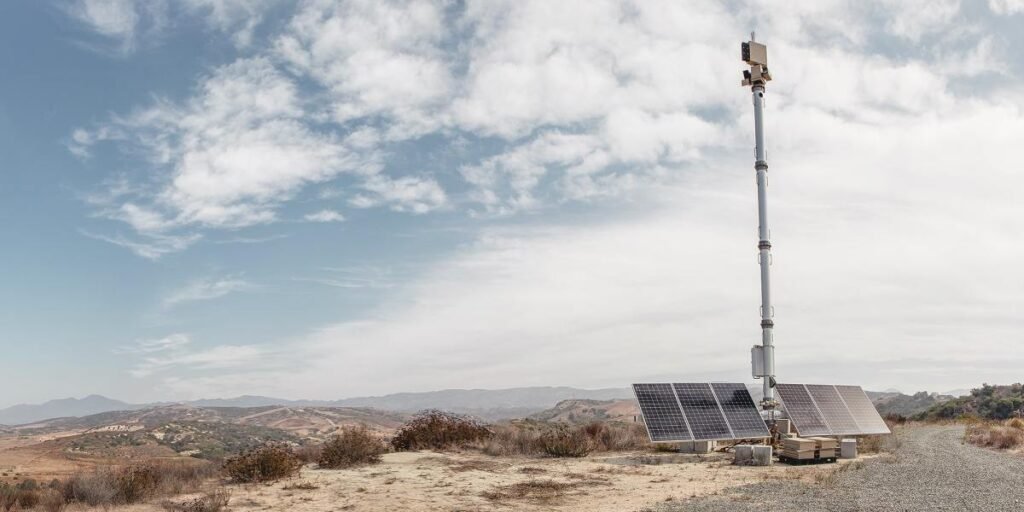by Whitney Webb, Unlimited Hangout:
 The political response to the crisis at the southern border continues to advance the bipartisan “smart wall,” having been backed by Trump and Biden alike. This bipartisan consensus reaches far beyond the US, as much of the world is similarly speeding along in implementing “digital borders.”
The political response to the crisis at the southern border continues to advance the bipartisan “smart wall,” having been backed by Trump and Biden alike. This bipartisan consensus reaches far beyond the US, as much of the world is similarly speeding along in implementing “digital borders.”
TRUTH LIVES on at https://sgtreport.tv/
The disastrous situation at the US-Mexico border is, and has been, intentionally produced. Throughout the last several administrations, regardless of campaign and other public rhetoric, the porous nature of the border has remained unresolved. On several occasions, the situation as it has developed has been blamed largely on incompetence and government inefficiency. Though some administrations have been tougher than others in regards to terrestrial migration (under some metrics), the US-Mexico border has not been sealed off so to force entrants to cross through officially recognized and managed ports of entry.
Under the current administration, it has been pointedly obvious that even the sections of the border that do contain physical barriers are being dismantled on purpose, all the while illegal crossings have risen to unprecedented levels. Whatever the motives for this deliberate policy on the part of the Biden administration, the end result has been the widespread characterization of the crisis as an “invasion,” priming the voter bloc usually most concerned with border security – the American Right – for military-style “solutions.”
While the justifications for the frenzied media coverage are based on the actual reality that the border is indeed highly insecure (and has been for some time), the policy responses from American politicians reveal that there is a bipartisan consensus about what must be done. Tellingly, the same “solution” is also being quietly rolled out at all American ports of entry that are not currently being “overrun”, such as airports. That solution, of course, is biometric surveillance, enabled by AI, facial recognition/biometrics and autonomous devices.
This “solution” is not just being implemented throughout the United States as an alleged means of thwarting migrants, it is also being rapidly implemented throughout the world in apparent lockstep. The reasons for the unspoken, but obvious, global consistency in implementing invasive, biometric surveillance is due to the fulfillment of global policy agendas, ratified by nearly every country in the world, that seek both to restrict the extent of people’s freedom of movement and to surveil people’s movements (and much, much more) through the global implementation of digital identity. Those policy agendas include mainly the UN’s Agenda 2030 or Sustainable Development Goals, specifically SDG 16, as well as Interpol’s Global Policing Goals.
While the American Right has been rather outspoken in its rejection of the UN’s Agenda 2030, and the digital ID project at large, the distress over the border situation is being used to manufacture consent among this specific group for “solutions” that are focused on expanding surveillance and biometric collection as opposed to the implementation of physical barriers.
The Virtual Wall
The Hawaiian shirt-wearing inventor of the VR headset Oculus Rift, Palmer Luckey, has become the face of America’s “virtual border wall.” Luckey, the brain behind the defense tech firm Anduril, is a long-time associate of Palantir co-founder Peter Thiel, with Luckey having met Thiel at 19 when Luckey presided over his first company Oculus Rift, which was later sold to Facebook. Thiel was then on Facebook’s board and was also instrumental in the rise of the social media company. Luckey’s Anduril is also backed by Thiel’s Founders Fund and another Palantir co-founder, Joe Lonsdale, is also an Anduril investor.
Anduril is one of the main beneficiaries of government contracts to build autonomous surveillance towers along the US-Mexico border, which are now also being rolled out along the US-Canada border. As a consequence, they are likely to be among the beneficiaries of the Senate’s current proposal for “border security,” which sets aside $170 million for additional towers to be build.
Under the Trump and now Biden administrations, Luckey has been vocal about how Anduril will create “a digital wall that is not a barrier so much as a web of all-seeing eyes, with intelligence to know what it sees.” As noted by WIRED in 2018, Luckey and Anduril has long been pitching its technology “as a complement to – or substitute for – much of [then] President Trump’s promised physical wall.”
Luckey was a donor to Trump’s inaugural committee and his apparent mentor, Peter Thiel, was a key figure on Trump’s transition team, particularly for defense. The company dresses itself in “America First” rhetoric, especially when it comes to border security, framing itself as a beacon of “Western democracy” and nationalism in an age of globalism. Despite this, Anduril is part of a network that fronts for the long-standing surveillance ambitions of the same American “Deep State” that Trump supporters revile.

Luckey’s Anduril would not exist without the assistance of Thiel and several executives from Thiel’s Palantir. As Unlimited Hangout has reported in multiple articles, Palantir is a CIA front explicitly aimed at resurrecting the controversial surveillance dragnet once housed by the Pentagon’s DARPA known as Total Information Awareness (TIA), which sought to use warrantless, dragnet surveillance of Americans to prevent crime and terrorism before it happens (i.e. pre-crime, a field which Palantir has since pioneered and which was essentially made DOJ policy by Trump’s Attorney General William Barr).
Read More @ UnlimitedHangout.com



